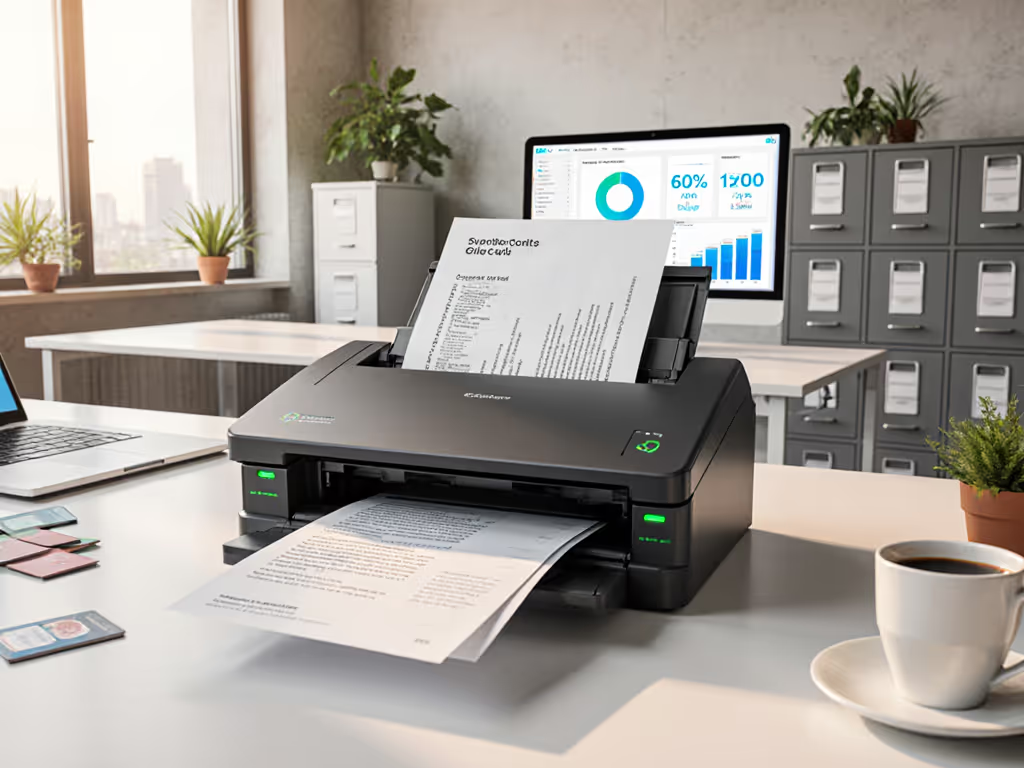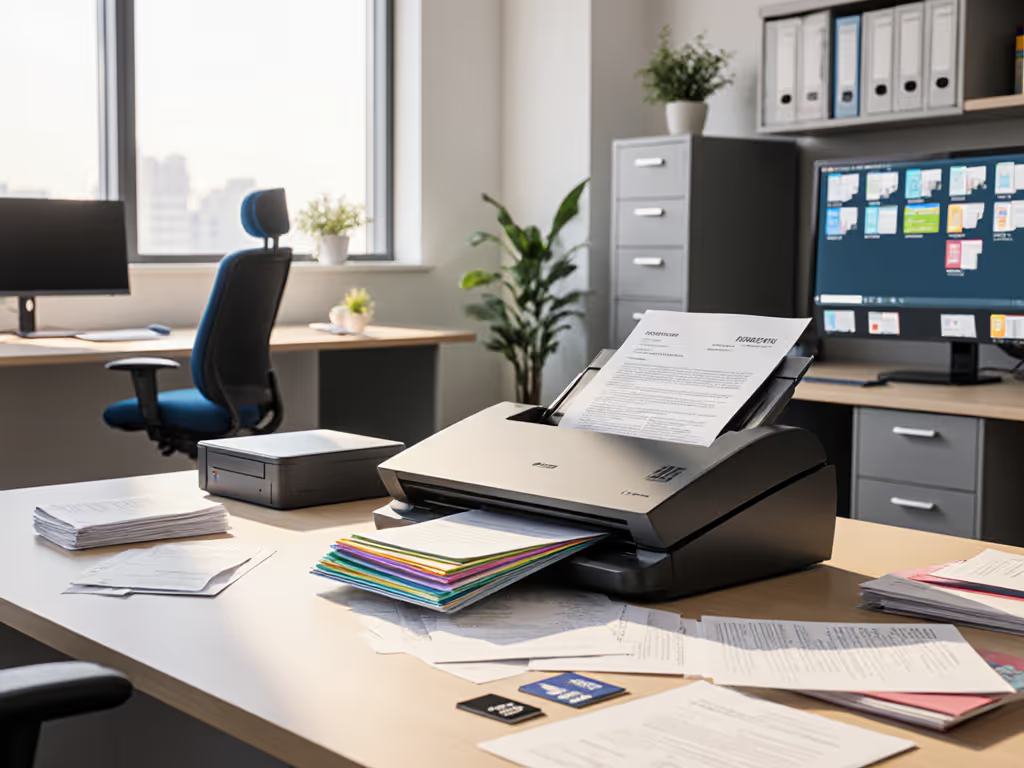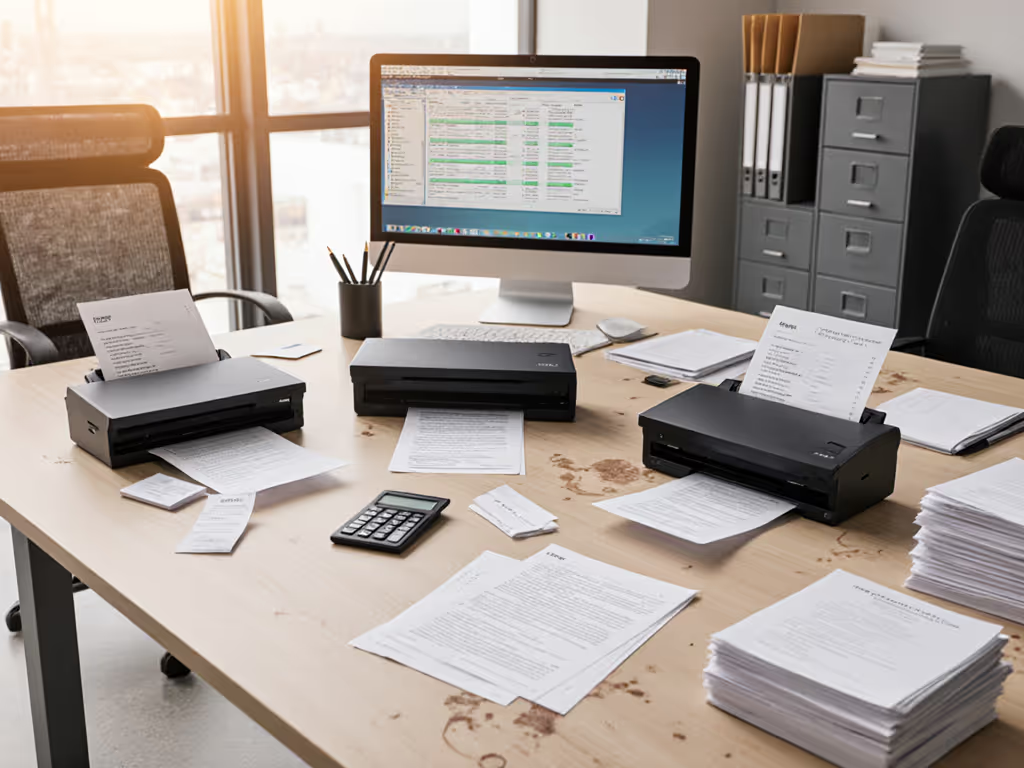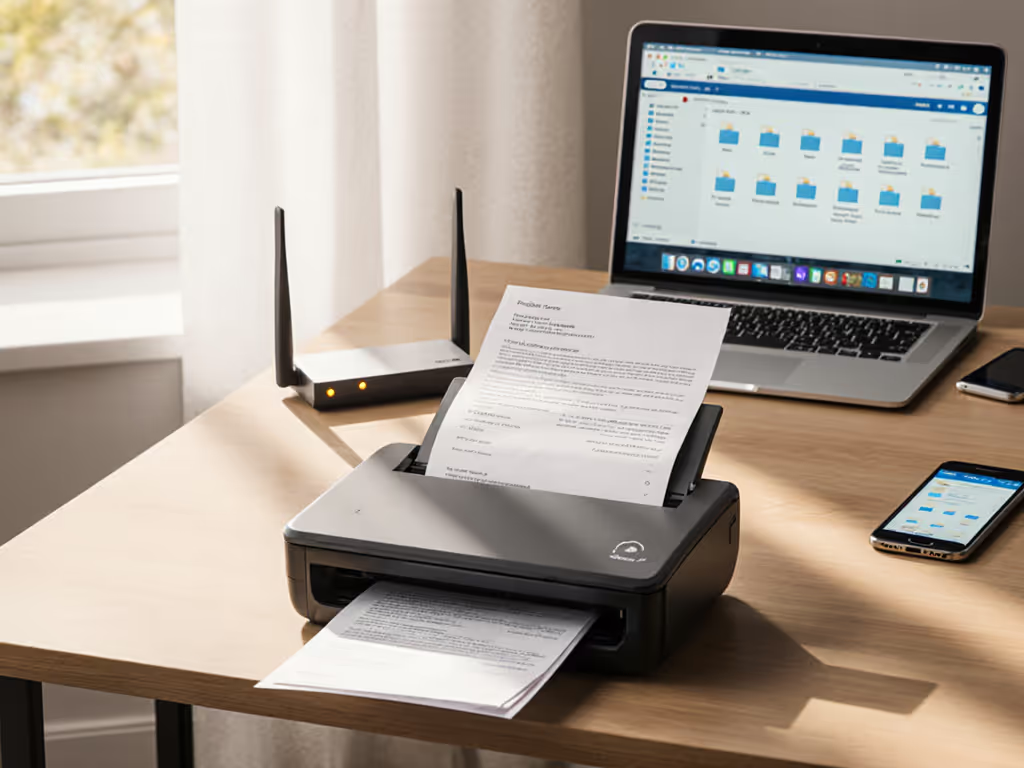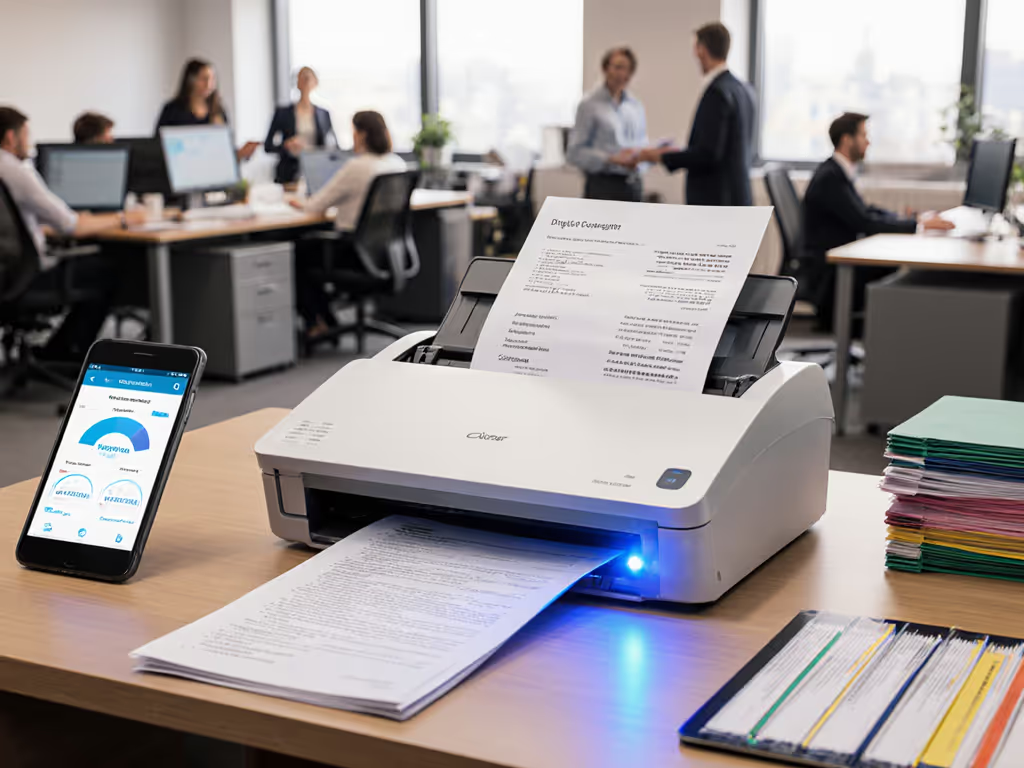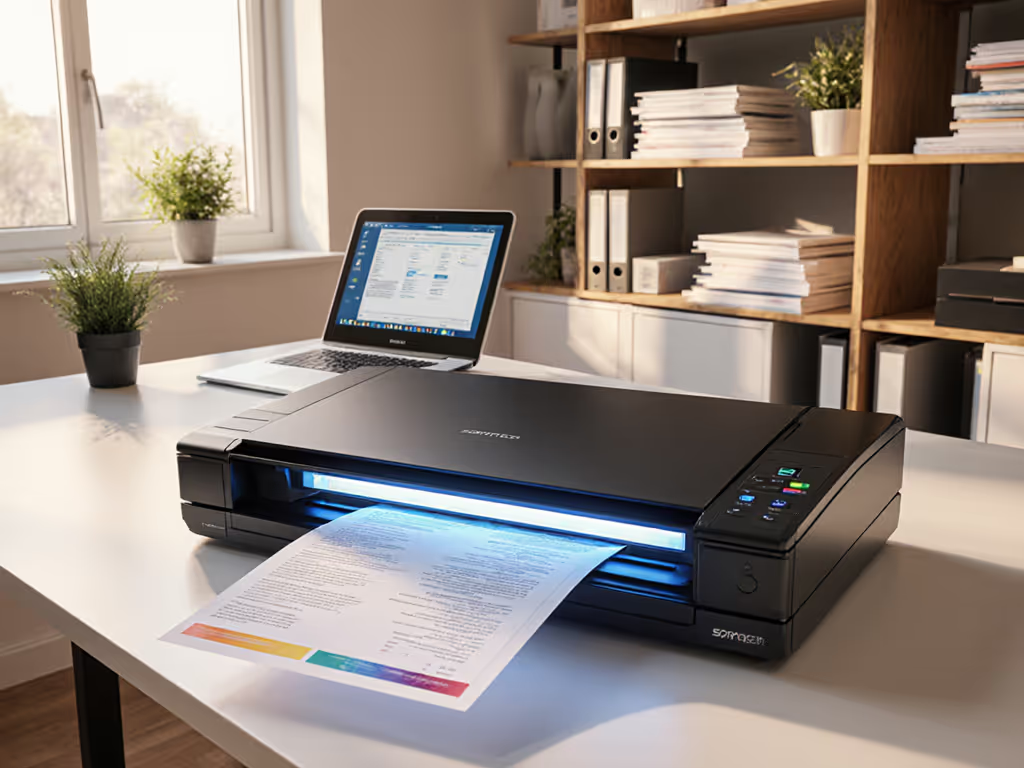Let's face it: finding the best document scanner for your team feels overwhelming when you're already drowning in paper. That stack of invoices, client files, or insurance forms shouldn't become tomorrow's emergency. As someone who's watched countless office managers wrestle with scanners that should work but don't, I know your real need isn't just a document scanner, it's a solution that works reliably for everyone on your team, even your most tech-averse staff member. Today, we'll cut through the jargon and walk through a simple, four-step process to identify exactly which scanner type will transform your paper chaos into organized digital files (without demanding extra time from your already stretched team).
Why This Matters More Than You Think
Most teams choose scanners based on speed or price alone, only to discover later that the real bottleneck isn't scanning speed, it's the entire workflow. That moment when Sarah has to redo scans because the OCR failed, or when Mark spends Monday mornings untangling jams from Friday's leftover stack? That's why your best document scanner must solve the human side of scanning, not just the technical specs. When I helped volunteers at a community nonprofit clear their backlog, we didn't start with hardware, we started by watching how they actually interacted with the scanner. The result? A system that vanished months of paper in one afternoon, all because it worked for them, not the other way around.
Step 1: Map Your Real Paper Flow (Not the Ideal One)
Before comparing models, spend one morning tracking exactly what crosses your desk. Grab a notepad and jot down:
- Document types (invoices, contracts, ID cards, receipts)
- Physical quirks (stapled pages, odd sizes, wrinkled receipts)
- Scan volume (pages per day/week)
- Current pain points (where does the process stall?)
This isn't about what should be scanned, it's about what actually is. Most teams I work with discover they're handling 30% more mixed-media items (like credit cards or long medical forms) than they realized. If your staff regularly handles passports, birth certificates, or three-hole-punched documents, a flatbed scanner with a platen cover might be essential. For pure letter-sized stacks, a sheet-fed model could save desk space.
Remember: the scanner you need handles your messy reality, not a brochure-perfect scenario.
Step 2: Match Scanner Types to Your Team's Workflow Reality
Flatbed Scanner: When Precision Beats Speed
A flatbed scanner shines when you need to scan books, fragile documents, or anything that won't feed through a machine. If your team routinely handles:
- Client photo IDs or insurance cards
- Thick medical records or legal exhibits
- Books or bound materials
...then the flatbed's versatility is worth the slower pace. The tradeoff? Higher staff involvement (you're swapping paper one piece at a time). Perfect for small batches where accuracy matters more than volume.
Portable Document Scanner: For Teams That Move
Consider a portable document scanner if:
- Staff scan receipts at client sites
- You need to digitize documents during home visits (common in healthcare or real estate)
- Space is tight in shared offices
These pocket-sized helpers prevent "I'll scan it later" delays. But be warned: if your team deals with crumpled receipts or mixed paper types, portables often struggle with automatic page separation. Only recommend these when scanning is truly episodic, not daily.
Professional Document Scanner: Your Daily Workhorse
When volume exceeds 50 pages daily, you need a professional document scanner with an automatic document feeder (ADF). Look for:
- Ultrasonic multi-feed detection (stops jams before they happen)
- 60+ page ADF capacity (for uninterrupted scanning)
- One-touch cloud routing (to Google Drive/SharePoint/etc.)
This is where most teams make their biggest mistake, they prioritize speed (pages per minute) over reliable throughput. A scanner that jams every 20 pages with mixed receipts and letter-sized forms creates more work than it solves. Your best document scanner here handles your specific mix of documents without constant babysitting.
Step 3: Design for Your Least Technical Team Member
Automation succeeds when the least technical person succeeds first. That's why I always ask: "Can your newest intern run this process before their first coffee break?" Here's how to ensure yours can:
- Create one-button profiles for common tasks ("Invoices to QuickBooks," "Client Files to SharePoint")
- Add visual cues like colored labels on scanner buttons
- Build in automatic error recovery (e.g., paused scans resume where they left off after a jam)
- Test with your most reluctant user, if they succeed, everyone will
I've seen teams transform their scanning culture in a single afternoon by replacing complex menus with three clearly labeled buttons. That's when the magic happens: "Train once; succeed daily." If it's fiddly, it won't survive Monday morning. Keep it stupid simple.
Step 4: Build Your Low-Friction Workflow in 20 Minutes
Don't just buy a scanner, design a workflow. Follow these steps before unboxing:
- Define your destination first: Decide exactly where scans go (e.g., "Google Drive > Clients > [Client Name] > [Date]")
- Create naming rules: "Invoice_[Vendor]_[Date]" beats "Scan_001.pdf"
- Set up OCR profiles for each document type (invoices need different settings than patient forms)
- Test with real paper: Scan your actual mixed stack, not clean test sheets
The most successful teams I've worked with spend 80% of setup time on routing and naming rules, not scanner specs. That's how you turn scanning from a chore into a "done" status in your workflow tracker.
The Real Test: Which Scanner Type Is Right for Me?
Ask yourself: "Which scanner type is right for me when my team is stressed, rushed, and scanning after 4 PM on a Friday?" The answer reveals your true needs. If your answer involves multiple software windows or complex settings, you've chosen wrong. Your perfect scanner should feel almost too simple, because simplicity is what survives real-world chaos.
Ready to simplify your scanning for good? Grab your notepad right now and spend 10 minutes mapping your most common paper stack. List the three document types you scan most, plus one "nightmare" item (like a stapled receipt on notebook paper). This single action will eliminate 80% of wrong choices before you even look at product specs. When you know your reality, the best document scanner choice becomes obvious, and your Monday mornings will finally start with "all caught up" instead of "sorry about those files."
Remember: the best technology disappears into your workflow. When your team stops thinking about scanning and just does it, you've won.
